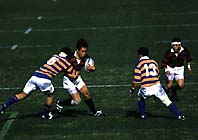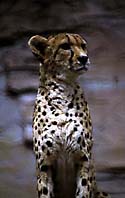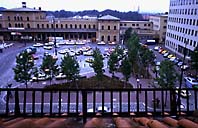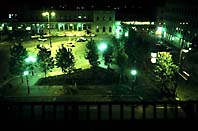TopMenu

Telefoto Lens
The telefoto lens has a longer focussing distance than a normal zoom lens. However, they are changing through the years. 30 years ago, a lens up to 200 mm was a zoom lens and a lens up to 300 mm was a telefoto lens. For example, the 300 mm lens was an amazing telefoto lens when the 1964 Tokyo Olympics was held. However, these days anything not over 400 mm can not be called a 'telefoto lens'. The reason being that a 300 mm lens has become so light and small that anyone can use it and also because the 300 mm lens has become a normal lens to use for nature and sports photography.
Nowadays, there are 400mm, 500mm,600mm,800mm,1000mm,1200mm and 2000mm lenses to name a few. Also depending on the type, there is the average telefoto lenses (angled) and the mira telefoto lens(reflecting). The mira uses 2 mirrors. Only a compact is cheaper, but its faults are that the lens is dark and you can't change the exposure.
All the reflecting angle lenses are glass, so they are heavy, thus quite pricey. Most of them use specialty glass and so they are a sharper and clearer lens.

Photo 1: A 2x teleconverter on a 400 ml lens. (a lens which you can double the focusing distance) was attached. So it becomes an 800mm lens. The minimum lens they use for sports is a 300mm and usually at least a 400mm zoom lens is necessary.

Photo 2: Shot at a zoo with a 500mm Mira lens. You get a much more powerful shot if you have a zoom lens at places like zoos, and you can block out or avoid metal bars and fences.
Fixed Point Shooting
The method to take photos from the same place at different times. To give an extreme example, it's like the Ginza of Showa period days and the Ginza of today. The fastest way of doing this is using the lunchtime and nighttime of the same day or taking the sunset. From the state of the sun, the same place and the same subject has a completely different impression, so fixed point shooting is quite fun.
Shooting the same subject at a fixed interval is called ' interval photography' and this is one kind of fixed point shooting style. With subjects like blooming flowers, or insect ecolysis (the shedding of old skin)etc, nature photos often use this style. The cameraman is not expected to stay still for all that time so he uses the accessory called the 'interval timer' and takes photos without being there. This is a very useful function for the camera to have.

Photo 3: Shooting the station surrounds in the middle of the day from a Europe village's hotel balcony

Photo 4:





